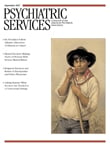This book provides a context for understanding the phenomenon of child homicide by parents—filicide—including murder in the first day of life—neonaticide. In addition to mothers who kill, the book addresses their paternal counterparts. Though mothers and fathers kill their children at nearly even rates, research has primarily focused on mothers. The literature review is interspersed with discussions of contemporary cases, which helps readers grasp the personal struggles of some of these parents. Recognizing that filicide risk is multifactorial, the authors discuss the importance of the intersection of factors including poverty, limited social support, and mental illness. Vulnerabilities and stresses of neonaticidal mothers are explicated, and the authors ask readers to consider a woman's options: neonaticide, abandonment, adoption, abortion, or mothering.
Child Homicide is strongest in discussing historical perspectives and suggestions for prevention. Filicide was used as population control in primitive societies with limited resources. Various preventive efforts, such as the ill-fated "baby farms," with their 90% mortality rate, are discussed. Punishments for offenders have evolved, from being tortured and buried alive in medieval France to the current maternal infanticide laws that mitigate punishment in more than two dozen nations. The authors' suggestions for prevention that merit further consideration include sex education that includes teaching decision making and consequences, public service announcements, teen pregnancy prevention, tactfulness of physicians treating teenagers, education about postpartum mood disorders, home visits, attention to adoption and foster home placement, education about disciplinary strategies other than shaking or beating, parenting education about child development, special attention to parents with disabled children, and available prenatal care with medical, social, and psychological support.
Despite these strengths, unfortunately the book suffers from proofreading and organization issues, such as a sudden discussion of neonaticide in the infanticide and filicide chapter and discussion of child murder by stepparents in the neonaticide chapter. One figure is variously referred to as being about infanticide and neonaticide perpetrators, with offenders noted as including stepfathers and babysitters, among others.
Weaknesses also occur in the discussions of postpartum mental illness and legal issues. Postpartum psychosis and postpartum depression are characterized as legal defenses. For example, in discussing postpartum disorders, the authors note, "The most severe (and rarest) form is psychosis, in which the woman does not know the difference between right and wrong; in many states, this must be present if the postpartum depression defense is to succeed." However, postpartum depression and psychosis are usually considered separate entities, and neither is predicated on not knowing right from wrong.
This book may be recommended to clinicians interested in parental mental health, but, because of the aforementioned issues, it may be confusing. Several other recent books on filicide are also available. It is hoped that this book will help alert clinicians to the risks of filicide and neonaticide so that deaths may be prevented.

